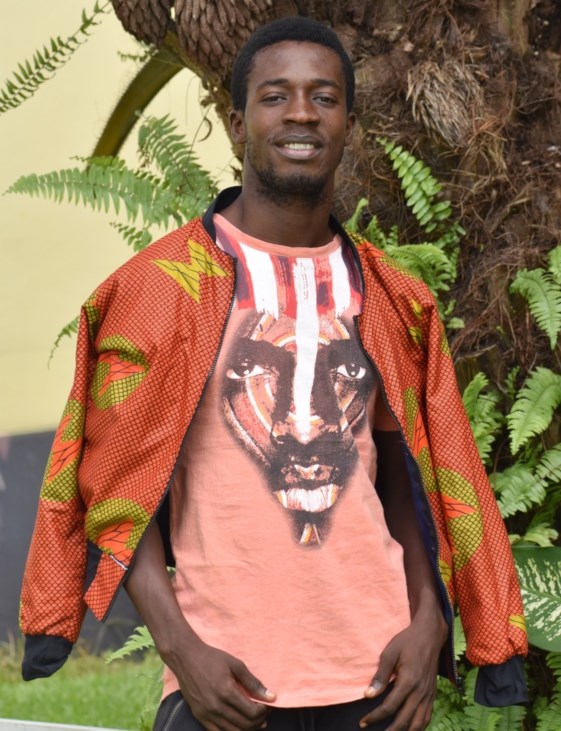Lady Ponce is a peer navigator for men who have sex with men (MSM) and transgender people living with HIV. In the following interview, learn about the peer navigator programme introduced by the USAID– and PEPFAR-supported LINKAGES project in Côte d’Ivoire.
This interview was first featured on Differentiated Service Delivery‘s website.

Lady Ponce in Cote d’Ivoire in April 2019 (Photo: Lady Ponce)
Can you tell us about the peer navigator programme in your community?
The peer navigator programme includes a package of activities for men who have sex with men and transgender people living with HIV to accompany them from the point of treatment initiation after diagnosis and on to receiving care and support in their community. In the community, the service offering includes organization of care and support groups, home visits, medical appointment follow ups, education on ARV treatment, and monitoring effective drug intake of key populations.
Can you tell us about your role and responsibilities as a peer navigator?
I provide psychological support to men who have sex with men and transgender people living with HIV and support them in accessing medical care. In addition, I am involved in medical follow up, in particular making sure that my peers adhere to their treatment and take their antiretrovirals (ARVs) correctly. I often visit my clients at home, and also organize peer care and support groups in facilities.
My key responsibility is to avoid AIDS-related deaths among my peers due to poor treatment adherence. Therefore, the main objectives of my work are to initiate and keep all my peers living with HIV on treatment and to reduce stigma and discrimination related to the HIV status of men who have sex with men and transgender people in my community.
I accompany my peers with discretion, trying to be always present for them without being invasive. I advise them even beyond HIV-related issues; I am their guide and friend. During home visits, I sometimes even help them when they need a helping hand for storage or cleaning. We are very close. In addition, my house is open to them in case they need a change of setting.
At the time that you received your diagnosis, did you have a peer navigator at your side?
At the time of my diagnosis, the peer navigation programme did not exist. Later, when it was introduced by the LINKAGES project of FHI 360, there was a peer educator whose accompaniment really helped me. I felt supported, and it eventually encouraged me to get engaged into the programme as a peer navigator. Since then, I help people like me in their medical and community follow up.
What type of training did you receive to become a peer navigator?
I received an entire package of training covering HIV testing, behavioural interventions and psychological support. In detail, the training I received was: peer education training for behaviour change communication; rapid HIV test training using finger-prick blood samples (Determine HIV Rapid Test); community counsellor training; psychosocial counsellor training; and peer navigation training.
What are the most important skills a peer navigator needs?
I think it is key that a peer navigator can function as a role model for other men who have sex with men in their community. Most importantly, peer navigators need to respect the confidentiality of the information their peers share with them. In terms of character, peer navigators should be dynamic, know how to listen, and make peers feel that they are available to support them. Lastly, I also realized that it is crucial that the peer navigator is able to read and write.
What are the special considerations or challenges when working with members of a key population?
The main challenge is to support my peers who are living with HIV to manage the double stigma of a positive HIV status and belonging to a key population. Stigma is a key obstacle to getting my peers initiated on HIV treatment, to access support groups and to having an undetectable viral load.
In addition to peer navigator programmes, what needs to be done to improve access by members of key populations to HIV services?
We need to find sources of funding for empowering members of key populations living with HIV so they can feed themselves and live responsibly.
